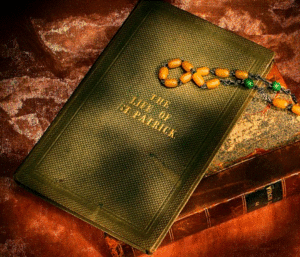Saint Patrick’s Day is more than just a day to wear green and search for four leaf clovers. Did you know that Saint Patrick was a godly individual that was used by Jesus to leave a big impact on this world? Read below and see if God may use such a day as Saint Patrick’s Day to inspire and encourage your faith in Him.
Early Years of Patrick
Though Patrick is remembered as an Irish man, he was actually a Roman-Britain who spoke Latin. He was born at the end of the 4th Century into a Christian family but chose to live as a rebellious non-Christian teenager. His grandfather was a pastor and his father was a deacon.
When Patrick was roughly 16 years of age, he was captured by pirates and sold into slavery in Ireland. He spent the next six years working as a shepherd for his master’s cattle and sheep. After being captured and sold into slavery in Ireland, Patrick began praying. He eventually gave his life to Jesus and was born again into a vibrant relationship with the Lord.
During his time in Ireland, it was said that Patrick prayed up to 100 prayers each day and another 100 prayers each night. When he entered his 20’s, Patrick claimed that God spoke to him in a dream and told him to flee from his master for a ship that was waiting for him. This led Patrick to make a 200-mile journey on foot without being caught or harmed. He found a ship sailing for his home. Before setting sail, the sailors informed Patrick they were out of food for their journey. Patrick prayed and a herd of pigs miraculously ran toward the ship, providing a bountiful feast for the long voyage home.
Missionary Years
After arriving back at his home, Patrick enrolled in seminary and was eventually commissioned as a pastor. It was during this time that God began to burden Patrick’s heart to return to Ireland to preach the gospel and plant churches. Many saw the Irish as an impossible group to reach for Christ. They were considered barbarians that were beyond hope. History describes these early 5th century Celtic Irish people as illiterate brawlers that preferred drinking and perverted pagan practices. They were considered violent and lawless, numbering anywhere from 200,000 to 500,000 people. They had no city centers or national government and were spread out among some 150 warring clans. Their enemies were terrified of them because they were known to show up for battles running naked and drunk while screaming as if they were demon-possessed. This did not deter Patrick.
Now in his 40’s, Patrick sold all of his possessions to fund his missionary journey. He moved to Ireland and worked as an itinerant preacher, and he paid large sums of money to the tribal chiefs to ensure he would be allowed to travel safely through their lands to preach the gospel. His strategy was unique in his day. He functioned like a missionary trying to relate to the Irish people. He communicated the gospel in their culture using such things as the three-leaf clover to explain the Trinity. When Patrick would enter a new clan, he would first strive to convert the tribal leaders and people of influence. He would then pray for the clans, preach God’s word, and use music and art to compel people to put their faith in Jesus. If a clan had enough converts, he would build a modest church building, baptize converts, and hand over the church to a covert he had trained to be the pastor so he could continue to repeat this process among other clans.
Conclusion
It is incredible to see how Patrick gave his life to the people that originally enslaved him as a 16-year-old boy. Patrick continued to serve in Ireland until he died at the age of 77. During his life Patrick saw thousands of people convert to Christ. It is said that out of the 150 tribes in Ireland as many as 40 tribes had become substantially Christian. Patrick is believed to have trained 1,000 pastors, planted 700 churches, and become the first person in history to take a strong public stand against slavery. Patrick was also radically committed to Biblical theology. (i.e. Scripture and the Trinity). Through his influence, the Irish church went on to produce some of the most gifted Christian artists the world has ever known, and their prayers and songs endure to this day around the world, including the Celtic hymn “Be Thou My Vision“.

